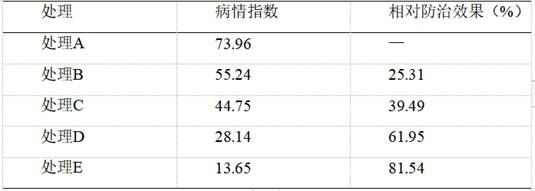EM bacteria cultured by ascophyllum nodosum enzymatic hydrolysate and application of EM bacteria to prevention and treatment of meloidogyne
A technology for enzymatic hydrolysis solution of Ascophyllum nodosum and leaf algae enzymatic hydrolysis solution is applied in the field of EM bacteria, and can solve the problems of difficult damage of chemical pesticides, increased types of harmful crops, limited varieties of crops with resistance to root-knot nematodes, etc.
- Summary
- Abstract
- Description
- Claims
- Application Information
AI Technical Summary
Problems solved by technology
Method used
Image
Examples
Embodiment 1
[0026] Embodiment 1. Enzymolysis of Ascophyllum nodosum
[0027] Divided into three groups A, B, and C according to different operating conditions, and carried out enzymatic hydrolysis of Ascophyllum nodosum, as follows.
[0028] Group A:
[0029] The fresh Ascophyllum nodosum was mechanically ground into a homogenate according to the material-to-water ratio of 1:2, added at 45°C according to the ratio of homogenate: ADL compound enzyme = 100:0.5, fully stirred and reacted for 28 hours, and passed through a vibrating sieve with a 100-mesh coarse The Ascophyllum nodosum enzymatic solution was obtained by filtration, and the viscosity of the Ascophyllum nodosum enzymatic solution was measured to be 79mPa s (39.5°C).
[0030] Group B:
[0031] The fresh Ascophyllum nodosum was mechanically ground into a homogenate according to the material-to-water ratio of 1:2, added at 50°C according to the ratio of homogenate: ADL compound enzyme = 100:0.4, fully stirred and reacted for 24 h...
Embodiment 2
[0034] Embodiment 2: EM bacteria liquid fermentation
[0035] According to the same operation process as follows, the A group, B group, and C group of the obtained Ascophyllum nodosum enzymolyzate were used to carry out three fermentation tests in parallel respectively, and correspondingly obtained EM bacteria fermentation liquid finished product 1, EM bacteria fermentation liquid finished product 2, Finished product of EM bacteria fermentation broth3.
[0036] (1) Inoculate EM strains in the seed liquid fermentation medium at a weight ratio of 5%, and ferment at 35°C at a shaking speed of 200r / min for 48 hours to obtain a seed liquid fermentation liquid;
[0037] The invention adopts the preparation method of the seed liquid fermentation liquid medium: 2% sucrose, 0.5% urea, 1.2% molasses, 0.5% sodium dihydrogen phosphate, 0.25% calcium carbonate, supplemented with deionized water to 100%, and sterilized at 121°C for 20 minutes;
[0038] (2) Inoculate the seed fermentation l...
Embodiment 3
[0044] Embodiment 3: the field test biocontrol effect of EM bacteria fermented liquid finished product on tomato
[0045] Using the tomatoes grown in Zouping Changshan’s severe root-knot nematode test field in previous years, the following experimental design was carried out to verify its control effect on tomato root-knot nematode (hereinafter, the finished product of EM bacteria fermentation liquid is also referred to as “biocontrol agent”):
[0046] Treatment 1: blank control (no drug application)
[0047] Treatment 2: Comparative example 2kg / mu
[0048] Treatment 3: Biocontrol agent 2kg / mu
[0049] Treatment 4: biocontrol agent 4kg / mu
[0050] Treatment 5: biocontrol agent 6kg / mu
[0051] After the tomatoes were harvested, the roots of the tomato plants were dug out, and surveyed according to the root-knot nematode classification survey indicators, as follows: grade 0 (no root knots); grade 1 (less than 5 root knots in the whole plant); 6-15 root knots); 3rd grade (16-...
PUM
 Login to View More
Login to View More Abstract
Description
Claims
Application Information
 Login to View More
Login to View More - R&D Engineer
- R&D Manager
- IP Professional
- Industry Leading Data Capabilities
- Powerful AI technology
- Patent DNA Extraction
Browse by: Latest US Patents, China's latest patents, Technical Efficacy Thesaurus, Application Domain, Technology Topic, Popular Technical Reports.
© 2024 PatSnap. All rights reserved.Legal|Privacy policy|Modern Slavery Act Transparency Statement|Sitemap|About US| Contact US: help@patsnap.com










